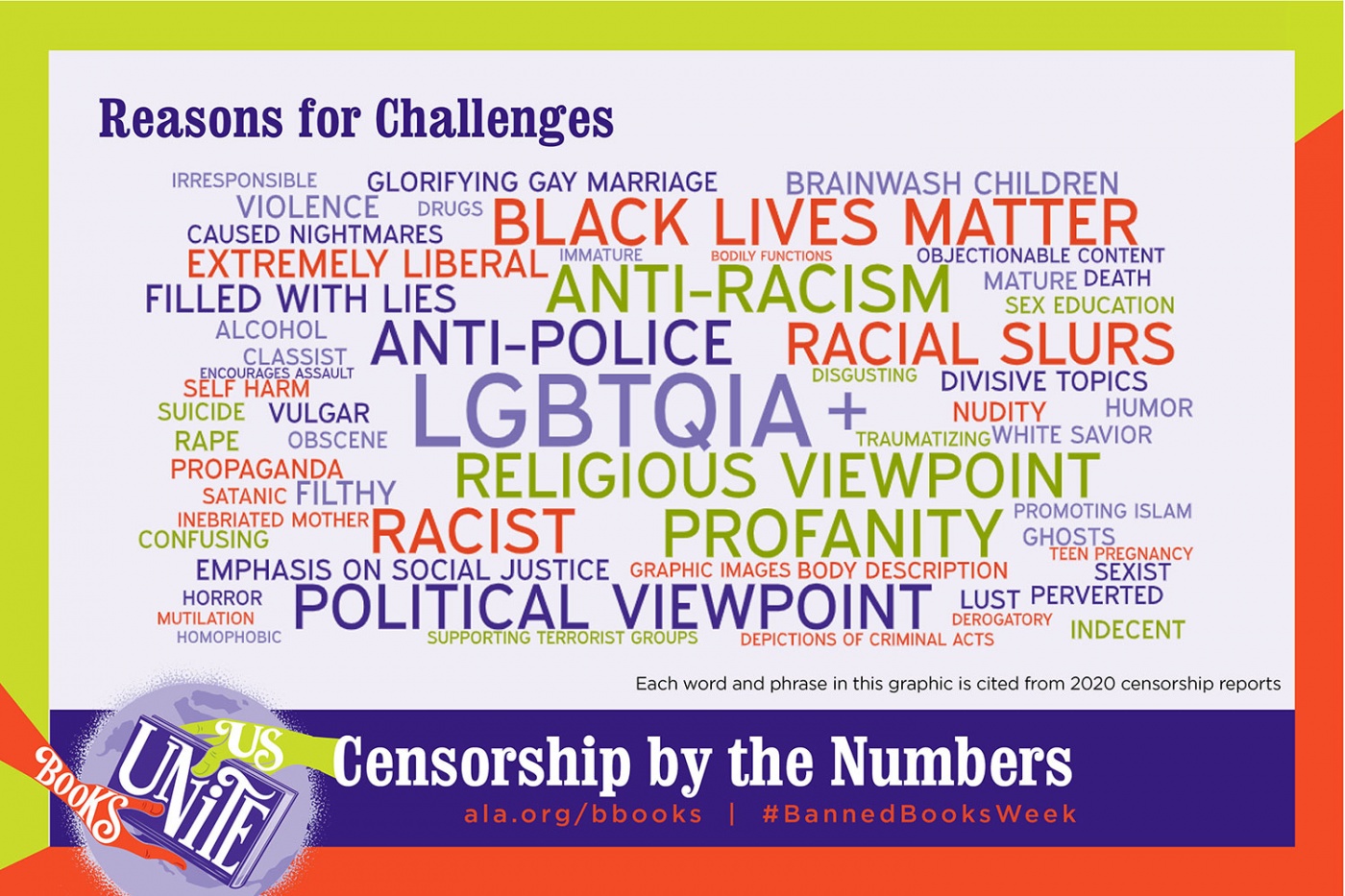
Observed annually during the last week of September, Banned Books Week celebrates the right to read, and, according to the American Library Association, "the freedom to choose or the freedom to express one’s opinion even if that opinion might be considered unorthodox or unpopular and stresses the importance of ensuring the availability of those unorthodox or unpopular viewpoints to all who wish to read them."
Some of the most common reasons for challenging books include profanity, sexual content, LGBTQIA+ themes, religious viewpoints, drug and alcohol use, and racist language. But there have also been far more unusual reasons for challenging books. For example, the picture book Brown Bear, Brown Bear, What Do you See?, which has the seemingly unobjectionable themes of identifying colors and animals, was once challenged by the Texas School Board of Education because its author, Bill Martin, was confused with another author who happened to have the same name and happened to write Ethical Marxism: The Categorical Imperative of Liberation.
It does turn out, however, that animals sometimes are the objectionable theme that leads to challenging a book. Specifically, talking animals have caused some controversy. In 1931, a Chinese governor banned Alice's Adventures in Wonderland because "animals should not use human language, and that it was disastrous to put animals and human beings on the same level." In 2006, parents in a Kansas School District challenged Charlotte's Web because "talking animals are blasphemous and unnatural."
Here are some books in the San Jose Public Library catalog that have been challenged for the reason they feature talking animals.


Add a comment to: One Weird Reason for Banning Books